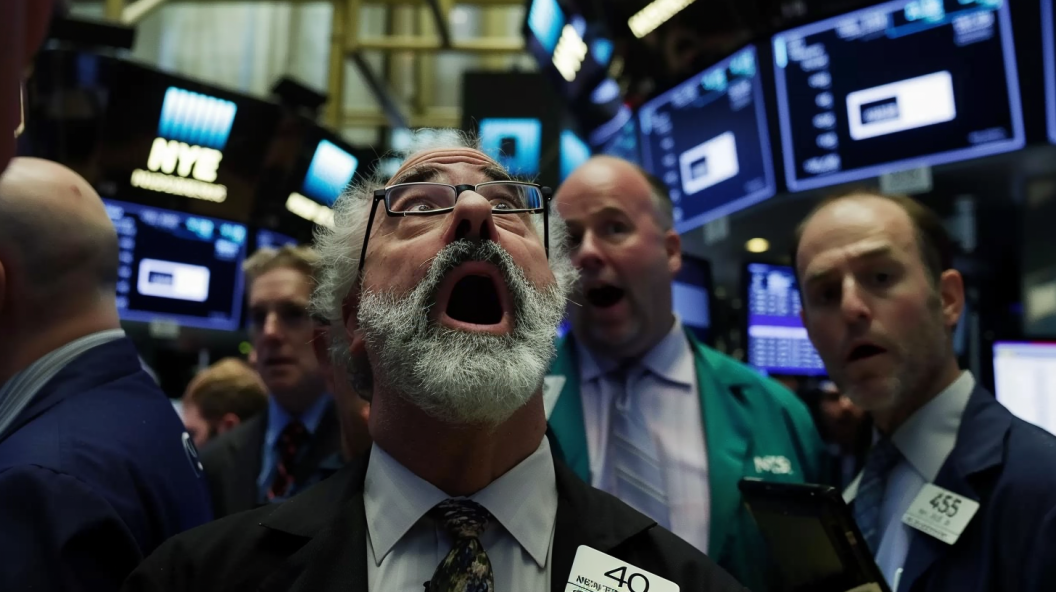| Key Points: – The VIX spiked to its highest level since March 2020, indicating high market volatility. – Major indices, including the Dow and Nasdaq, suffered significant losses amid recession fears. – Experts urged the Federal Reserve to consider emergency rate cuts to stabilize the economy. |
In a significant development for global financial markets, the Cboe Volatility Index (VIX), commonly known as Wall Street’s “fear gauge,” surged to its highest level since the pandemic-driven market plunge in March 2020. This increase in volatility comes amid a sharp sell-off in equities, driven by mounting concerns about a potential U.S. recession and disappointing economic data.
The VIX briefly soared above 65 on Monday morning, a dramatic rise from about 23 on Friday and roughly 17 just a week ago. It later cooled to about 42 shortly after 10 a.m. ET, reflecting ongoing market turbulence. The last time the VIX reached such heights was in March 2020, when it climbed as high as 85.47 following the Federal Reserve’s emergency actions during the Covid-19 pandemic.
The VIX is calculated based on market pricing for options on the S&P 500 and is designed to measure expected volatility over the next 30 days. It is often used as an indicator of investor fear and market uncertainty. Historically, spikes in the VIX have coincided with significant market sell-offs, although they can also precede swift recoveries.
Monday’s market rout saw the Dow Jones Industrial Average drop 854 points, or 2.1%, while the Nasdaq Composite lost 3.1%, and the S&P 500 slid 2.5%. The decline was part of a broader global sell-off, with Japan’s Nikkei 225 plunging 12%, marking its worst day since the 1987 Black Monday crash.
The sell-off was triggered by a combination of factors, including fears of a U.S. recession, disappointing July jobs data, and concerns that the Federal Reserve is not acting quickly enough to cut interest rates to support the economy. The Fed recently chose to keep rates at their highest levels in two decades, exacerbating investor anxiety about economic growth.
Tech stocks were among the hardest hit, with Nvidia falling more than 5%, Apple dropping nearly 4.6% after Warren Buffett’s Berkshire Hathaway halved its stake in the company, and Tesla down 10%. Other major losers included Broadcom and Super Micro Computer, down 7% and 12%, respectively.

The bond market also reflected heightened fears, with U.S. Treasury yields tumbling as investors sought safe havens. The yield on the benchmark 10-year note fell to 3.7%. Meanwhile, Bitcoin experienced a sharp decline, falling from nearly $62,000 on Friday to around $52,000 on Monday.
In Asia, the Nikkei 225’s 12.4% loss underscored the global nature of the sell-off. The index closed at 31,458.42, its worst day since 1987, with a record point drop of 4,451.28. The decline was exacerbated by the Bank of Japan’s decision to raise interest rates, which ended the yen “carry trade” and increased the yen’s value against the U.S. dollar.
The sharp increase in the VIX and the corresponding market declines have prompted calls for urgent action. Jeremy Siegel, Wharton professor emeritus and chief economist at Wisdom Tree, urged the Federal Reserve to implement an emergency 75 basis point cut in the federal funds rate and to consider another cut at the September meeting. Chicago Fed President Austan Goolsbee also acknowledged that current interest rates might be too restrictive and suggested that the central bank would take necessary actions if economic conditions deteriorate further.
As markets continue to digest these developments, investors are closely monitoring economic data and Federal Reserve communications for signs of stability. The interplay between economic indicators, Fed policy, and market reactions will be crucial in determining the trajectory of the financial markets in the coming weeks. With three more Fed meetings scheduled for this year, there remains ample opportunity for the central bank to adjust its policy stance in response to evolving economic conditions.
The dramatic rise in the VIX serves as a stark reminder of the market’s vulnerability to economic uncertainties and the importance of vigilant policy responses to maintain stability and investor confidence.
